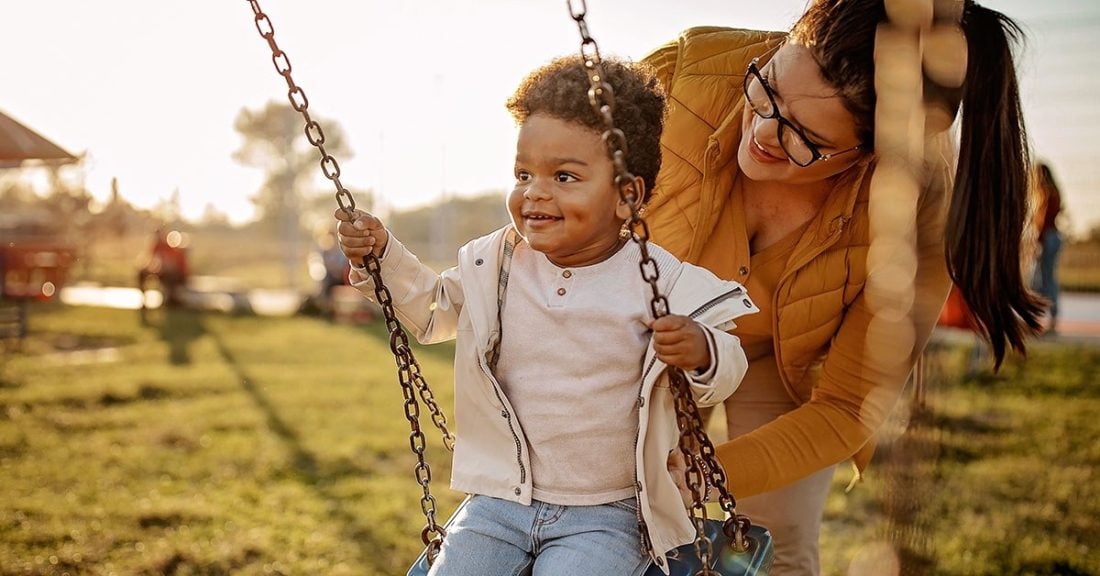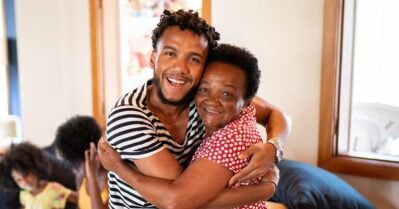Child Welfare and Foster Care Statistics

Our nation’s child welfare system strives to protect children from maltreatment, support families in crisis, keep children safely with their parents when possible, provide temporary out-of-home care for children when needed and ultimately ensure that children have safe, permanent homes with their families, relatives, adoptive parents or legal guardians. This post provides the latest statistics on child welfare in the United States, focusing on foster care statistics, from the Annie E. Casey Foundation’s KIDS COUNT® Data Center, a robust source of the best available data on child well-being in the nation.
KIDS COUNT includes state-by-state data on child abuse and neglect and children living in out-of-home care from the National Child Abuse and Neglect Data System, the federal Adoption and Foster Care Analysis and Reporting System, and the National Youth in Transition Database. These data help our Foundation and leaders across the country to monitor trends, assess the child welfare system and advance policies and practices to improve outcomes for children, youth and families — particularly for children of color who are overrepresented in the system and more likely to experience negative outcomes.
Stay up to date with the latest information on child welfare by signing up for our newsletter and exploring our child welfare and foster care resources.
Child Welfare by the Numbers
KIDS COUNT offers more than 60 measures of child welfare, encompassing how many children and youth are in the system, the rates at which they enter it, their demographic characteristics and their experiences in foster care, exiting care, being adopted when applicable, aging out of the system and more. In addition to child welfare statistics at the national and state levels, KIDS COUNT also provides data by territory, when possible. Policymakers, child welfare agencies and others have used these data for decades to understand how well the system is meeting the needs of vulnerable children, youth and families, and how it can be strengthened so that all children who have experienced maltreatment can heal and grow up with safe, stable families.
Statistics on Emotional, Behavioral and Health Problems Linked to Child Trauma
Children and youth who experience trauma, including abuse or neglect, are at increased risk for long-term emotional, behavioral and physical health problems, among other challenges. KIDS COUNT offers scores of additional measures that describe these types of life challenges for children and youth, ranging from high-risk behavior, such as juvenile justice system involvement and substance abuse, to difficulties with mental health, physical health and academic performance (data are provided by state and race and ethnicity, as well as other breakdowns, when possible). Importantly, the consequences of child maltreatment can be mitigated with equitable access to trauma-informed services and nurturing, lasting family relationships and support.
Child Maltreatment Trends
The likelihood that a child will be abused or neglected in the United States has improved slightly in recent years: 7 in every 1,000 kids under 18 were confirmed victims of maltreatment in 2023, down from 8 per 1,000 in the previous three years and 9 per 1,000 the five years before that. Of approximately 542,900 victims in 2023, about three in four experienced neglect, consistently the most common type of maltreatment. About 1 in 6 (17%) of these children were physically abused, 10% were sexually abused, 7% were emotionally abused and 2% experienced medical neglect. Young kids are the most at risk, as more than two-thirds (69%) of verified victims were 10 and under in 2023, similar to previous years.
Foster Care Statistics
Foster care is meant to provide safe, temporary living arrangements and support services for children who have been removed from their families due to maltreatment, lack of safety or inadequate care. Stable relationships and home environments are critical for healthy child and youth development. Discover what happens to youth aging out of foster care.
Foster care statistics from KIDS COUNT, listed below, describe children who enter care, their demographic characteristics, their living arrangements during foster care, where they go when they exit care and the experiences of youth who never leave and age out of the system. These are critical indicators that can flag areas for system improvement, such as the disproportionate representation of children of color and the need to better support older youth in foster care.
Learn more about the foster care system
Children Entering Foster Care
In 2023, 176,340 children under 18 entered foster care in the United States, a rate of 2.4 per 1,000, down slightly from 2.5 in 2022. Kids ages 1 to 5 make up the largest share (28% in 2023) of children entering care, but infants under age 1 enter care at the highest rate of all age groups. For example, in 2023, 9.4 per 1,000 babies entered care, more than three times the rate of kids ages 1 to 5 who had the second highest rate of 2.7 per 1,000.
National data also show that Black and American Indian and Alaska Native children continue to be overrepresented among those entering foster care. In 2023, Black children represented 22% of those entering care but only 14% of the total child population. American Indian and Alaska Native kids have the highest rate of entry into foster care, at 6.2 per 1,000 in 2023, more than three times the national average of 2.0 per 1,000 and well above the rates for all other racial groups. The reasons for this are complex, and efforts to improve racial equity in child welfare have been underway for many years.
Explore more statistics on children entering foster care, including data by state:
- Children entering foster care by age group (percent or rate)
- Children entering foster care by race and ethnicity (percent and rate)
Children in Foster Care
Once children enter foster care, the goal is to either safely reunify them with their parents if the family concerns are resolved or secure another permanent family. A total of 360,531 children and youth were living in foster care in 2023, almost 8,000 fewer than in 2022. Similar to previous years, 32% of these children are ages 1 to 5 and 7% are babies. As a population rate, infants are the most likely to be in foster care (6.4 per 1,000 in 2023), followed by kids ages 1 to 5 (6.0 per 1,000). Consistent with the inequities described above, national data on children in foster care illustrate the disproportionate representation of children of color.
Children in foster care are most likely to be placed with non-relative foster families, of all living arrangements. In 2023, less than half (43%) were placed with non-kin foster families, a slight decline from the previous year. Although historical data from 2000 to 2021 show some positive trends, with placements in group homes dropping and placements with relatives increasing, the latest data (which are not comparable to older years) reveal less encouraging news. For instance, from 2022 to 2023, placements with relatives decreased from 34% to 31% while placements in group homes rose from 9% to 11%. Fewer children are placed in pre-adoptive homes (6% in 2023) or have trial home visits (4%), and some older youth live independently with supervision (3%).
Nearly 40% of foster children and youth experience more than two placements each year, meaning their living arrangements change at least three times a year. At the state level in 2023, this figure ranged widely from 8% to 60%. Child welfare agencies are working to minimize these moves, as they are disruptive, stressful and often traumatizing. Stable relationships and home environments are critical for healthy child and youth development.
Access all statistics on children in foster care, including data by state:
- Children birth to 17 in foster care (number and rate)
- Children and youth of all ages in foster care (number only)
- Children in foster care
- by age group (percent or rate)
- by race and ethnicity (percent or rate)
- by gender
- by placement type (percent or rate)
- in group home or institution placements only, by race and ethnicity (percent or rate)
- with more than two placements, by race and ethnicity (percent or rate)
Statistics on children in foster care waiting for adoption:
Related statistics on children in out-of-home care from KIDS COUNT:
- Children in kinship care
- Children in the care of grandparents
- Children living with neither parent
Learn about kinship care
Children Exiting Foster Care
The latest data show that 188,290 children and youth exited foster care in 2023 and just under half (45%) were reunited with their parent or primary caretaker, down one percentage point from 2022. More than one in four (27%) children were adopted from foster care in 2022 and 2023. Other common outcomes for children and youth who cannot return to their parents include exiting care to live with legal guardians (11% in 2023), living with other relatives (7%) and emancipation (8%), also known as aging out of foster care.
Among children adopted out of the child welfare system, more than half were young kids ages 1 to 5, in all years available on KIDS COUNT. Most of these adoptions are by the foster parents (either relatives or non-relatives), who cared for the children while in foster care.
Explore all statistics about young people exiting foster care and those who have been adopted:
How Long Do Kids Stay in Foster Care?
The federal government’s Children’s Bureau provides additional foster care statistics, such as the length of time children spend in care. In 2025, they reported that, among children who exited foster care in 2023, over a third (35%) were there less than a year, while nearly half (46%) spent 1 to 3 years in care and 20% stayed in foster care 3+ years. See the Child Welfare Information Gateway, a service of the Children’s Bureau, for additional foster care data summaries.
Youth Aging Out of Foster Care
More than 15,000 youth left foster care in 2023 without reuniting with their parents or having another permanent family home, over 3,000 fewer than the previous year. The transition to adulthood is a significant and challenging developmental phase of life for all young people, but youth aging out of foster care on their own must face this without the support of a stable, loving family. Many also lose access to services and supports offered through the foster care system. Not surprisingly, these youth and young adults are more likely to experience behavioral, mental and physical health issues, housing problems and homelessness, employment and academic difficulties, early parenthood, incarceration and other potentially lifelong adversities. In line with the racial inequities noted earlier, youth of color are more likely to experience these challenges.
The trajectories of these young people are not guaranteed, however. They can be positively influenced by policies and practices that ensure these vulnerable youth receive culturally-responsive, trauma-informed transition services and support to navigate the steps to adulthood, achieve stability and reach their full potential.
Recognizing the importance of this population, the Foundation provides in-depth resources on youth aging out of foster care and 30 indicators describing the challenges they face as well as the support they receive, including academic, employment, health, financial, mentoring and other transition services.
Key findings among youth transitioning out of foster care:
- Nearly one in five (19%) experienced homelessness between ages 17 and 19, and one in four (26%) experienced it between 19 and 21. Among American Indian and Alaska Native young adults, the figure jumps to an alarming 39% for ages 19 to 21.
- One in seven (14%) were incarcerated between ages 19 to 21. See data by state and race and ethnicity.
- Close to one in 10 (8%) became parents between ages 17 to 19, while about one in five (19%) became parents between ages 19 to 21.
- By age 21, over two-thirds (70%) have a high school diploma or equivalent. The same is true for 66% of American Indian and Alaska Native and 78% of Asian American young adults.
- Just 59% report being employed (full- or part-time) at age 21, with this figure ranging from 50% for American Indian and Alaska Native young adults to 66% for Asian Americans.
- From 2015 to 2023, youth ages 14 and older became less likely to access transition services — of all types — offered via the federal John H. Chafee Foster Care Independence Program. For example, the share of young people receiving academic support fell from 46% to 35% over this period, while those receiving career preparation services declined from 39% to 27% and access to mentoring support dropped from 22% to 15%. At the same time, the latest data show modest improvements between 2021 and 2023 in access to several services. KIDS COUNT tracks 11 measures for each service received, overall, and by race and ethnicity (once a new window opens, scroll down to the final statistics).
Other Statistics Linked to Childhood Adversity and Trauma
As noted, when kids experience trauma — such as abuse, neglect or even hardships during foster care — these events can disrupt healthy development and increase the risk for negative long-term outcomes, including poor behavioral, mental and physical health, as well as reduced school and work achievement.
KIDS COUNT offers an array of state-level statistics on these issues, with much of it available by race and other demographic factors. This includes data on:
- Safety and risky behaviors, such as youth residing in juvenile detention facilities, and teens abusing alcohol or using cigarettes, marijuana and other drugs
- Mental and physical health, such as youth feeling depressed or hopeless, and health conditions (e.g., obesity, asthma and special health care needs)
- Academic achievement and related issues, such as test scores, school discipline, students missing school, students not completing high school, teens neither working nor in school and much more
- Family and community conditions, including children living in high-poverty areas and unsafe communities, adverse childhood experiences, family structure, household internet access, access to mentors and more
- Youth and young adult well-being, which spans 60 measures in areas like employment, poverty, education, health and other family and community issues
Learn More About Child Welfare in the United States
Reports and Resources on Child Welfare and Foster Care
The Annie E. Casey Foundation has been publishing resources and developing new solutions to support vulnerable children and families for more than two decades. Resources like the following reports help child welfare agencies, policymakers and advocates improve the child welfare system:
- Thriving Families, Safer Children: This article describes a first-of-its-kind national effort supported by the Foundation and other partners to rethink state and local child welfare systems. The effort uses a public health framework to advance approaches that create conditions for strong, thriving families.
- Integrating Positive Youth Development and Racial Equity, Inclusion and Belonging Approaches Across the Child Welfare and Justice Systems: Developed in collaboration with Child Trends and Child Focus, this report includes the STRENGTH framework, which builds on young adults’ assets, addresses their developmental needs and resource introduces a framework that builds on young adults’ assets, addresses their developmental needs and advances community-based solutions that reduce or avoid family separations.
- Six Strategies for Keeping Families Supported, Connected and Safe: This brief shares six pivotal strategies for coordinating and funding community efforts to support families at risk of entering the child welfare system.
- Kinship Policy Improvements Toward Child Welfare System Transformation: Part five in a series, this report summarizes state kinship care policies to advance the field’s understanding of how states are finding, informing and partnering with kin when a child enters foster care.
- Creating Supportive Work Environments for Youth With Foster Care Experience: This new toolkit funded by the Foundation offers guidance for workforce practitioners and child welfare leaders on how to encourage employers to create more supportive work environments for young people with foster care experience.
- Elevating Youth Engagement: A Training Curriculum for Meaningful Partnership With Young People in Foster Care: This curriculum offers training modules, facilitator guides and exercises to help child welfare professionals and youth move toward shared decision-making and authentic partnership. The resource supports agencies in embedding youth voice into systems and services that effect their lives.
- Opportunity Passport — Financial Capacity for Young People Who Experience Foster Care: This brief describes a financial education and matched savings program designed to help young people achieve success as they move from foster care to adulthood. It was developed by the Foundation’s Jim Casey Youth Opportunities Initiative and remains a defining strategy of this work.
Stay Connected and Do a Deep Dive With Our Resources
Sign up for the Casey Foundation’s newsletter to get the latest reports, data and news on child welfare in the United States, access KIDS COUNT data and learn about publications, webinars, podcasts, blog posts other resources. Covered topics include:
- Foster care
- Child welfare
- Adoption
- Child protection
- Family First Prevention Services Act
- Kinship care
- Guardianship
- Permanence
- Racial equity and inclusion
- Youth in transition (aging out)
See current trends in child well-being in the U.S in the 2025 Data Book






